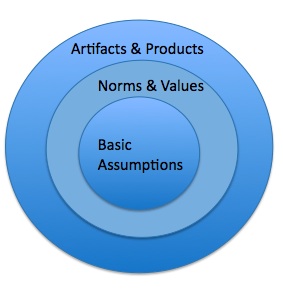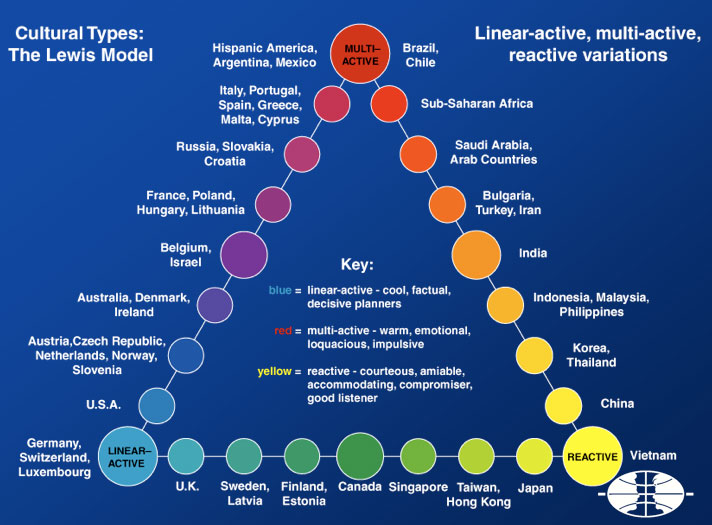Before exploring the various aspects of leadership in a multicultural setting, including potential challenges and solutions, it’s important to define a commonly used term. The word “culture” is used in many ways today, but do we truly understand what it means? In fact, there are several definitions based on the context in which the term is used. Geert Hofstede, a prominent Dutch researcher in organizational studies, describes culture as “(…) the collective programming of the mind that distinguishes the members of one group or category of people from another.” The term “category” may refer to nations, regions within or across countries, ethnic groups, religions, occupations, organizations, or genders.
For my needs, the definition I find most helpful is the ‘onion model’ of culture by Trompenaars. It uses a simple image, an onion, to explain the complexity of culture. The outer layer shows behaviors, language, food, clothing, and so on. As you go deeper, you discover norms and values. The innermost layer consists of “basic assumptions”[2] such as routine actions and beliefs that are deeply ingrained.
 ”Onion Model” of Culture[3]
”Onion Model” of Culture[3]
What this model really shows is that we cannot judge or pretend to understand a person simply from his or her behaviours, clothing and food. There is much more to culture than what we can actually see. Acknowledging this fact and being mindful when being part of or leading international teams, will actually help avoiding misunderstandings and bring clarity. “The first step for leaders is to help all players recognize that there are cultural differences – to recognize their importance and impact”.[4]
Let me give you an example: a simple question at the end of a workshop or meeting like “does everybody understand what the next steps are, i.e. is everything clear” can have a different impact on people with various cultural backgrounds. Whereas in some cultures people are used to ask questions, seek clarification and understanding, in some other cultures admitting that things are not clearly understood is actually considered as ‘losing ones face’; hence there won’t be any questions or signs that some information was missing which for the workshop or meeting leader will be very confusing as he/she will be expecting a certain output. In order to avoid this particular situation, it can be very helpful to have a look at cultural type models, like the “Lewis’ model” to give one example:[5]

Although it appears difficult to categorize every single person, this model provides a helpful approach and can already solve many problems before they appear.
Specialised coaches can of course help navigate the uncertain waters of intercultural management. Part III of this article will look into the difference of intercultural coaching versus coaching in an intercultural management environment as well as highlight the difference between measures on the job and measures off the job. Stay tuned!
[1] From: http://geerthofstede.nl/culture.aspx
[2] See also: F. Trompenaars and P. Woolliams: „Transcultural Competence through 21 Reconciliations“. In: 21 Leaders fort he 21st Century – How innovative Leaders manage in the digital age. Editor. F. Trompenaars and Ch. Hampden-Turner. Oxford 2001, p. 397-398.
[3] In alteration from H. Blom and H. Meier: „Intercultural Management“ (=International Management. Editor. H. Meier). Page 40.
[4] Trompenaars/Woolliams: Transcultural Competence, p. 397
[5] R. Lewis: http://www.crossculture.com/services/cross-culture/; see also: R. Lewis: “When teams collide – Managing the international team successfully”, Nicholas Brealey Publishing, London 2012, p. 13.